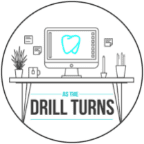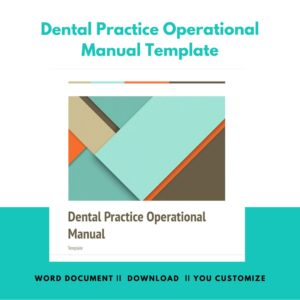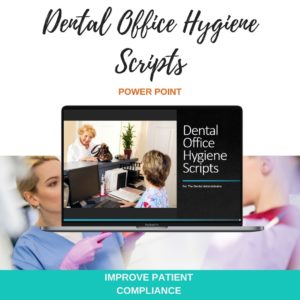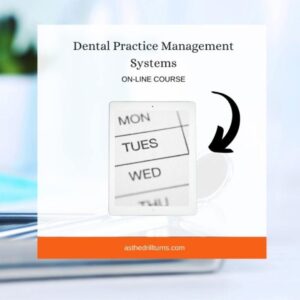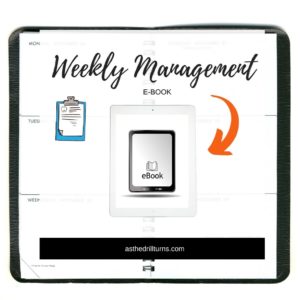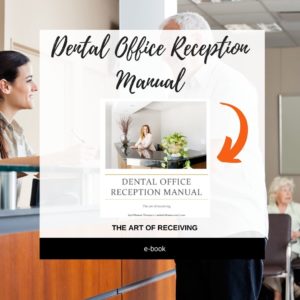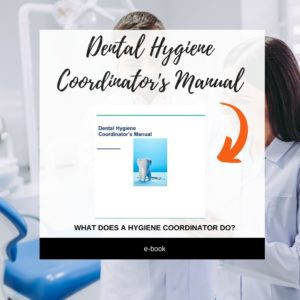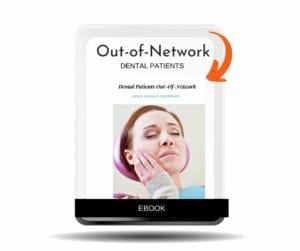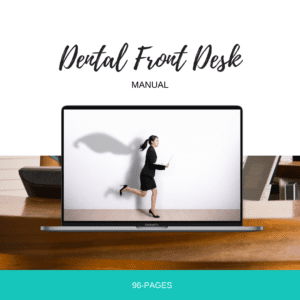Dental Office Chart Notes are Legal Medical Records
Dental office chart notes are official documents. Patient chart notes record treatment performed. And patient chart notes also record office communication with the patient.
These critical records support the dental administrative professional in patient communication. And provide valuable information to the entire team. Not to mention their role in dental insurance claims or liability insurance for the practice as well.
State Laws Vary
Medical records and record-keeping vary from state to state in the United States. And it’s important that all dental team members are aware of the laws governing their state. However, both state and federal laws govern how these documents are handled, how long they are kept, and who has access to the records.
The dental practice does own the patient chart. But patients also have the right to access to all of their complete dental records, and to ask for copies.

What's Inside Dental Office Chart Notes?
Dental office chart notes must be meticulous. This is an official medical and legal record. So, it’s important to keep in mind that others may read every word. Correct spelling is absolutely essential. Thankfully, with electronic records, we have some help with that! And we want to keep most of our actual chart notes clinical in nature. The dental administrative team must not add opinions or non-clinical information as a chart note. Just one more reminder, legally, we are bound to our individual state legislation.
Here is a list of what is normally included in the dental office chart notes:
- patient demographics
- consents and record transfers to and out of the practice
- previous dental offices and incoming x-rays, perio charting, etc.
- dental and medical history
- diagnostic records
- progress and treatment notes
- medication, prescriptions given, refills
- patient complaints and resolutions
- conversations about proposed treatment
- radiograph review
- lab work order forms
- periocharts and notes
- molds and shades of teeth for lab work
- missed appointment notes
- patient non-compliance notes
- follow-ups
- home care instructions
- frequency of hygiene recall visits
- pamphlets given to patients
- any cancelled and not rescheduled appointments
- all attempts to reach patient to schedule treatment
- correspondence (letters & phone calls)
- referrals to specialists
- follow ups from specialists
- dismissal letters or transfer out
- date chart inactivated
- date of patient’s death
Dental Patient Chart Notes is Just One of The E-Books You'll Download With Your Dental Practice Operational Manual Here
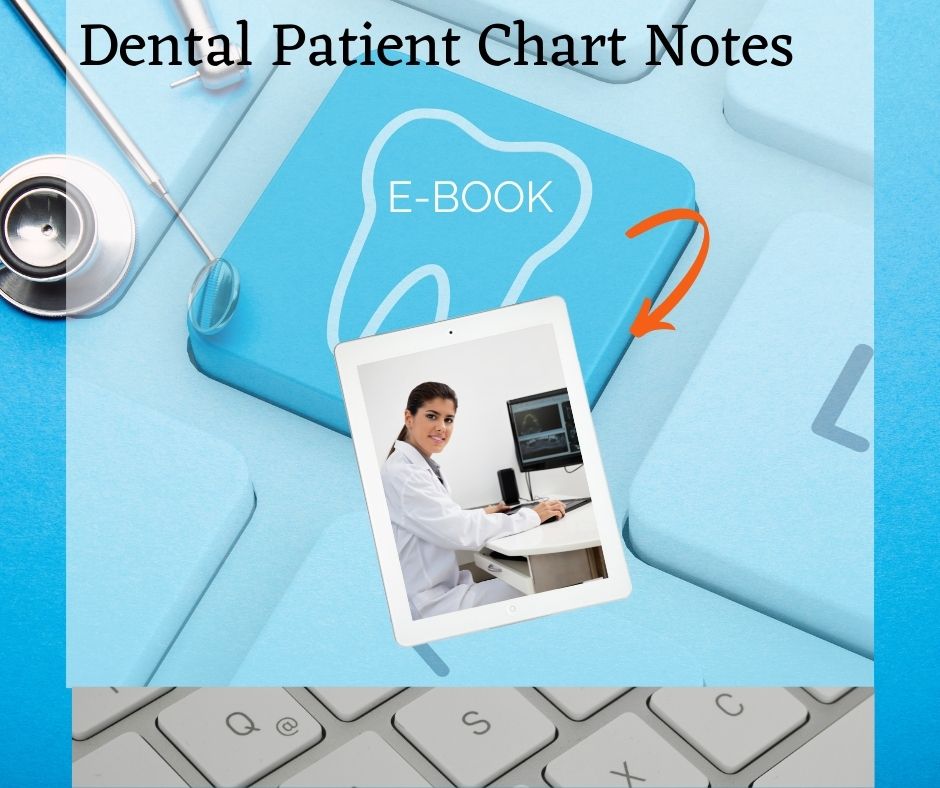

Abbreviations in Dental Patient Chart Notes
Dental office chart notes are quite extensive. And they definitely include a whole lot of information! So, it can be helpful to use abbreviations. But it’s best and most professional to use a list of office approved abbreviations only! And to have a set format that everyone in the office uses.
If a new abbreviation is needed, add this item to a team meeting agenda. Don’t just make something up and run with it!
Dental office chart notes must stick to the facts. No drama here! We are not writing a novel. But adding to a legal document. So be sure to read over what you have written in the patient’s chart. And then you will sign the chart note in the manner delegated by your practice chart note protocols.
Create a Key
There are some very common abbreviations that we find in dental practice chart notes. I have made a short list for you. And you can certainly adjust as necessary and add to as needed. But be sure to keep a “key”.
Every office wants to have this key or guide available for new team members that are hired. Or for any insurance or legal audit of a patient chart as well. And be sure to update your key as you add or change any abbreviations as well.
Abbreviation Key Example
BA – broken appointment
BOP – bleeding on probing
2BWX – 2 bitewing radiographs
4BWX- 4 bitewing radiographs
CRN – crown
Ex – exam
EXT – extraction
Fl – fluoride
FMX – full mouth series of radiographs
NKDA – no known drug allergies
NSF – no significant findings
PA – periapical radiograph
panx – panoramic x-ray
P.O. – post operative
Pro, Prophy – prophylaxis
RX – prescription
TX – treatment
WNL – within normal limits
Stick to the Facts
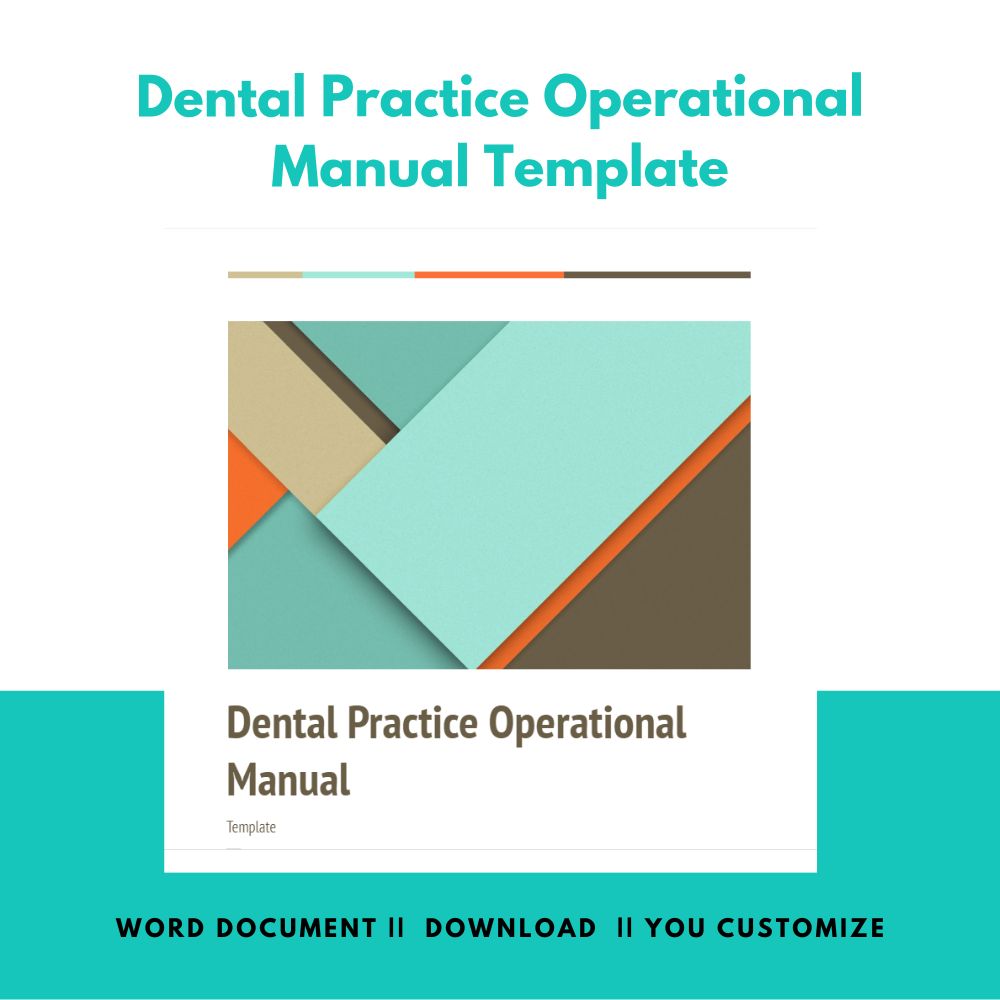
Dental office chart notes must stick to the facts. No drama here! We are not writing a novel. But adding to a legal document. So be sure to read over what you have written in the patient’s chart. And then you will sign the chart note in the manner delegated by your practice chart note protocols.
Note Scanned Documents
Make a note when a document is scanned to a patient’s chart. Or when x-rays are imported from another practice or specialist. Just a simple date and a note, “scanned medical history to chart” with your signature is enough. If the medical history cannot be found, or is not legible, we want to know what happened. Or at least try to figure it out.
Don’t Delete
When a mistake happens within a chart, note it. Let’s say someone does make a note in the wrong chart. And maybe doesn’t catch that until the next day. We don’t ever want to delete a chart note. That opens up a whole new can of worms and suspicion. Simply make a note as an addendum that the wrong chart was noted. And that this is an error. Then make a note in the correct chart. And sign and date. We all make mistakes. But don’t make an innocent mistake look like possible fraud with a chart note deletion.
